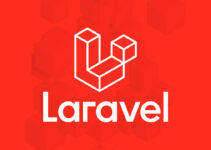The accelerating shift towards practice management software signals the digital transformation reaching healthcare’s doorstep. In 2021, the global medical practice management software market was valued at $6.8 billion. But by 2029, projections forecast this booming sector will exceed $13.85 billion, with anticipated growth near 10% CAGR through 2022-2029, according to DataBridge Market Research.
This meteoric rise clearly reflects healthcare rapidly adopting next-gen systems to replace time-consuming manual workflows. For today’s healthcare professionals, optimized productivity enabled by data-driven software tools has become an urgent priority rather than a luxury.
Let’s take a deeper look at how modern practice management solutions are revolutionizing efficiency and care across the healthcare continuum:
The Pivotal Push Towards Healthcare IT Modernization

Source: keenesystems.com
While the healthcare industry used to lag behind in adopting digital tech and updating its systems, recent years have seen a big push to catch up, thanks to the widespread use of technology.
Nowadays, therapists, doctors, dentists, chiropractors, eye doctors, and many other healthcare professionals consider using integrated practice management software a necessity, not just an option.
Whether it’s a small clinic or a large healthcare system, everyone knows that having streamlined processes and all their data in one place is vital for delivering top-notch care, especially in today’s complex healthcare landscape.
According to survey data from Software Advice, nearly 80% of practice management solutions now come with essential features like appointment reminders, insurance claims management, client billing, and integrations with web-based EHR software.
With most platforms offering similar basic capabilities, what sets them apart? But before we dive into that, let’s first explore how these modern tools tackle common challenges through automation and systemization.
Core Capabilities in Modern Healthcare Software
Today’s leading practice management systems incorporate advanced features designed to simplify and enhance all facets of operating a successful medical business:
Appointment Scheduling and Reminders
Intuitive online booking and automated phone, SMS, and email reminder alerts help fill schedules while decreasing no-shows through convenience.
Client Health Records
Robust profiles securely store demographic details, insurance coverage, documented health history, prescriptions, lab orders, and other important data in one centralized platform.
Billing and Claims Processing
Automated insurance verification, superbill generation, CPT code application, claims filing, patient statement processing, and payment posting streamline billing.
Clinical Documentation
Customizable progress note templates enable documenting patient visits, treatment plans, session details, goal outcomes, and other vital records digitally.
Referral Management
Seamlessly manage incoming client referrals from other providers while generating outbound referrals when specialty care is needed.
Secure Communication
HIPAA-compliant messaging capabilities foster confidential dialogue between care providers, staff, and patients.
Performance Analytics
Tables, graphs, and drill-down metrics provide real-time practice insights on schedules, revenue, patient visits, care outcomes, and operational processes to optimize decisions.
Telehealth Functionality
Multi-modal care delivery via integrated telemedicine enables video consultations, remote care, mHealth, and continuous data capture from wearables.
Optimizing Practice Administration and Finances

Source: fujifilm.com
Healthcare professionals often find themselves juggling a universe of administrative tasks, from scheduling to billing, reporting, compliance, and staffing, all while trying to provide care. It can get pretty overwhelming.
But there’s a solution: integrated software systems. These systems can help ease the burden by optimizing workflows. Instead of chasing scattered paperwork and switching between spreadsheets, providers can turn to unified platforms that automate and simplify essential functions, from booking appointments to managing the revenue cycle. It’s a game-changer. Key benefits include:
- Reduced administrative hours spent on manual tasks.
- Fewer errors and redundancies through systematization.
- Streamlined coordination between billers, admins, and clinicians.
- Increased transparency into revenue cycles and collections.
- Improved organizational oversight and compliance.
- Additional time focused on patients versus paperwork.
Per an American Medical Association study, physicians are increasingly adopting practice management solutions specifically to heighten productivity, organize complex operations, and reduce errors through digitization.
Enhancing Patient Care Delivery
While the benefits of consolidating back-office tasks are substantial, optimizing the actual patient care experience is equally important when selecting healthcare software. Solutions that facilitate delivery and coordination can enhance clinical outcomes.
Care Planning and Coordination
Customized treatment planning templates, integrated scheduling, referral coordination, and care team collaboration features keep patient needs at the nucleus.
Progress Tracking
Digital progress notes allow clinicians to thoroughly document each patient visit, along with treatment evaluations, goal outcomes, medication changes, upcoming orders, and plans.
Enhanced Data Insights
Dashboards compiling key data like vitals, lab results, medication responses, diagnostic history, and outcomes analysis allow providers to deliver targeted, effective, evidence-based care.
Patient Engagement
Convenient self-scheduling, appointment reminders, video visit capabilities, and access to health records improve patients’ involvement in managing their conditions.
By aggregating clinical data and patient progress in one place while coordinating staff workflows, modern systems tangibly enhance care quality and the overall healthcare experience.
Secure Communication and Collaboration

Source: mindbridge.ai
In healthcare environments, clear communication and coordination are vital for patients, providers, and organizational success. Practice management platforms can facilitate this through:
- HIPAA-Compliant Messaging allows providers and staff to securely communicate digitally with colleagues and patients regarding sensitive information.
- Referral Management Optimizing the client referral process, enabling smooth hand-offs between specialty providers.
- Shared Team Calendars and Tasks Enhancing cross-departmental alignment of schedules and assignments to streamline workflows.
- Staff Portals and Forums Connecting employees across locations using shared portals for announcements, updates, and discussion.
With robust tools fostering seamless collaboration both internally and with patients, healthcare organizations set the stage for top-notch experiences.
Prioritizing Ironclad Data Security and Compliance
Cybersecurity is non-negotiable in the healthcare realm as data protection laws like HIPAA carry substantial penalties and reputational risks. Alongside robust encrypted security protocols, leading solutions incorporate:
- Access limiting controls with role-based permission tiers.
- Remote data wiping of lost or stolen devices.
- Comprehensive activity audit trails to identify breaches.
- Geographically dispersed backups prevent data loss.
- On-premise data hosting options for increased control.
- Continuous system monitoring to identify vulnerabilities.
- Testing validating security defenses and contingency planning.
- Physical security controls at data centers like biometric entry authentication.
By taking data protection seriously and making it central to selection criteria, healthcare organizations can adopt software securely.
The Bottom Line: Better Care Through Connected Systems

Source: bootcamp.berkeley.edu
As medical practices become more hectic and patients rightfully demand improved experiences, seamlessly integrated software emerges as the connective tissue binds discrete healthcare processes into a cohesive whole focused on quality and outcomes.
While new technologies will continue disrupting healthcare, taking the first step to augment manual workflows using robust digital systems paves the way for greater innovation.
Software might not heal patients directly, but its potential to help providers heal and connect meaningfully should not be underestimated. Because in healthcare, progress depends on efficiently translating potential into purpose.
Addressing Key Questions About Healthcare Software
How can I ensure the practice management software I select will properly secure sensitive patient data?
Look for comprehensive features like HIPAA compliance, encrypted data protections, stringent access controls, regular audits, breach monitoring, backups, and data center physical security. Avoid vendors with lax or unclear security protocols.
What functionality should I prioritize if I want software that improves patient experiences?
Capabilities like intuitive patient self-scheduling, visit reminders, telehealth options, patient health record access, and care coordination features all allow for enhancing different facets of the patient journey.How can I get staff buy-in during the software transition process?
Involve key team members early in reviewing options to get input. Provide personalized training and post-go-live support. Share success stories from early adopters. Highlight benefits specific roles will gain. Set reasonable adoption goals and acknowledge achievements.
What does effective software integration with my electronic medical records (EMR) system look like?
The right practice management platform will offer robust APIs and out-of-the-box connectors to sync crucial data like patient demographics, visit details, prescriptions, orders, bills, and clinical documentation seamlessly into your EMR for a unified record.
The Future of Connected Healthcare

Source: online.regiscollege.edu
- What emerging technologies like telemedicine, AI assistants, wearables, voice tech, and analytics can further enhance practice management software capabilities in the future? Which holds the most promise in your opinion?
- How can healthcare IT leaders balance technology adoption with maintaining meaningful human relationships and compassionate care values? What policies or training programs can help achieve this?
- What cybersecurity and ethical risks do you foresee as healthcare digitizes? How can IT systems embed robust safeguards upfront to address these concerns?
- How can digital tools be made more accessible across socioeconomic and literacy divides to ensure equitable care delivery improvements?
The possibilities seem endless for technology to help transform disjointed healthcare into a continually learning, integrated, patient-centric ecosystem.
While challenges exist, the opportunities promise substantial improvements in experiences, efficiency, and connections between clinicians and patients when thoughtfully implemented.
Key Takeaway
The meteoric rise of practice management software signals that healthcare’s digital transformation has arrived. Integrated systems now allow the translation of cluttered workflows into interconnected orchestras where each component complements the wider goal of delivering compassionate, timely, and effective care.
By thoughtfully embracing tools that consolidate administrative tasks, enhance clinical coordination, securely share data, and optimize communications, practitioners can thrive amid mounting complexities.
Technological change is inevitably disruptive, but digital capabilities promise more empowered, satisfied providers and patients when harnessed strategically through a lens of purpose.
Because at its core, quality care depends on augmenting knowledge and choosing technology with humanity. With the right foundations and mindset, healthcare can traverse dizzying digital advances by upholding this sacred commitment to compassion above all.



